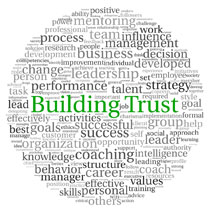As a Team Member, Do You Lose Your power?
T o some, the word power is a four letter word, in other words, a dirty word. Power just means the ability to accomplish work. Power exists and failure to acknowledge it, can prove disastrous. Some people who know they have power may avoid being members of work teams. Others with power may try to unduly exert that power if they are a member of a team. What powers do you have?
o some, the word power is a four letter word, in other words, a dirty word. Power just means the ability to accomplish work. Power exists and failure to acknowledge it, can prove disastrous. Some people who know they have power may avoid being members of work teams. Others with power may try to unduly exert that power if they are a member of a team. What powers do you have?
Power is typically associated with the movers and shakers of the world, like the Donald Trumps, the Warren Buffets or the executives in a corporation. Yes, these types all have power. Does the CEO have more power than a VP just because he or she is the CEO? In most cases, probably yes. However, there are times and circumstances when someone else’s power might trump the CEO’s power. Let’s take a look at the type of powers you might see and use on a daily basis.
Expertise or What You Know Let’s say you are excellent at negotiation and the CEO is not. You might be called into the trenches to land the next big deal with your negotiation skills. You have the power - at least for the "moment." Having information or expertise can also be used in power plays to embarrass, surprise or frustrate someone.
 Teams usually have a mutual goal. Sports teams have a goal to win a game or tournament. Scientific teams might have a goal to find a cure, or gather information or find the source of a problem. Work teams have projects such as improving marketing, conducting customer research or product development to name a few examples. What happens to the team goal if the entire team is not clear on the goal or if each member has his or her own agenda either for the team or themselves?
Teams usually have a mutual goal. Sports teams have a goal to win a game or tournament. Scientific teams might have a goal to find a cure, or gather information or find the source of a problem. Work teams have projects such as improving marketing, conducting customer research or product development to name a few examples. What happens to the team goal if the entire team is not clear on the goal or if each member has his or her own agenda either for the team or themselves? Wouldn’t it be great to roll through each work day with a team that is collaborative, communicates well, values training and development, and has a genuine concern for the future leadership of the organization? Or is your team rolling on deflated tires? Is a team such as the description gone the way of Ford’s Edsel? (OK, I’m dating myself now, and you younger readers, just Google it). Such a team does exist at Goodyear North America. First a brief scenario of how this team began its journey as conveyed in the August issue of HR Magazine.
Wouldn’t it be great to roll through each work day with a team that is collaborative, communicates well, values training and development, and has a genuine concern for the future leadership of the organization? Or is your team rolling on deflated tires? Is a team such as the description gone the way of Ford’s Edsel? (OK, I’m dating myself now, and you younger readers, just Google it). Such a team does exist at Goodyear North America. First a brief scenario of how this team began its journey as conveyed in the August issue of HR Magazine. Teams are supposed to work together flawlessly, share the workload, be collaborative, and watch each other’s backs. Operative words, supposed to. At least this is the theory. As we all know from school, theories are just that. Once we’re out of school theories go to hell in a hand basket and reality sets in. Let’s look at a few realties, what they are and how to deal with them.
Teams are supposed to work together flawlessly, share the workload, be collaborative, and watch each other’s backs. Operative words, supposed to. At least this is the theory. As we all know from school, theories are just that. Once we’re out of school theories go to hell in a hand basket and reality sets in. Let’s look at a few realties, what they are and how to deal with them. The United States Post Office is not typically singled out for being a poster child for team work. However, last week I had nearly 40 big envelopes to mail for a marketing project. I went to the window and the agent looked at them and asked me the usual questions. “Are these all the same?” “Yes”, I replied. He questioned me further, “They are all exactly the same?” “Yes”, I patiently responded. He continued his querying, “There is no difference?” “No, not a hair’s difference.” I quipped. He then asked the usual questions about if there is anything hazardous, perishable, etc, etc? I replied, “No, nothing blows up, tears up or spits up.” Funny, he didn’t laugh.
The United States Post Office is not typically singled out for being a poster child for team work. However, last week I had nearly 40 big envelopes to mail for a marketing project. I went to the window and the agent looked at them and asked me the usual questions. “Are these all the same?” “Yes”, I replied. He questioned me further, “They are all exactly the same?” “Yes”, I patiently responded. He continued his querying, “There is no difference?” “No, not a hair’s difference.” I quipped. He then asked the usual questions about if there is anything hazardous, perishable, etc, etc? I replied, “No, nothing blows up, tears up or spits up.” Funny, he didn’t laugh. This is the fourth and final part of a four part series.
This is the fourth and final part of a four part series. This is the third of a four part series.
This is the third of a four part series. This is the second of a four part series.
This is the second of a four part series.